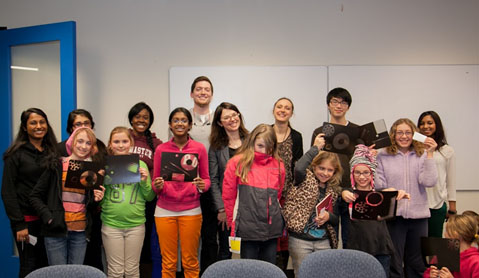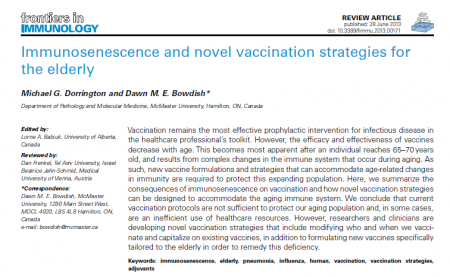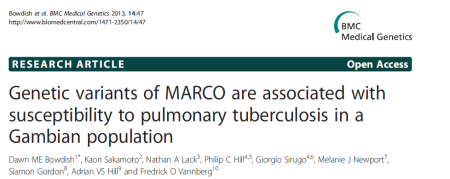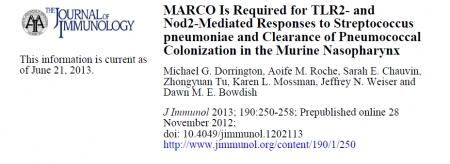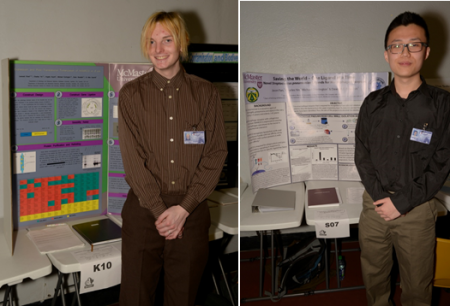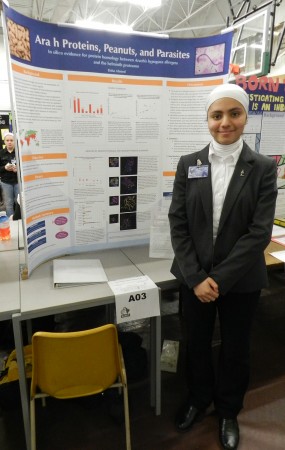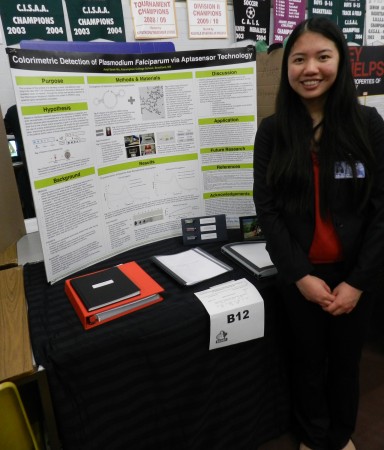On Thursday March 7th, the Bowdish Lab welcomed a group of five to twelve year old girls for a night for a night of science fun! In association with The Canadian Association for Girls In Science (CAGIS), the Bowdish lab opened its doors to promote and encourage our future young scientists.
CAGIS is an award winning national science club for girls aged 7-16, the purpose of which is to promote, educate and support interest and confidence in science, technology, engineering and mathematics among girls. Needless to say, The Bowdish Lab jumped at an opportunity to inspire such an eager group.
The night began with an introductory presentation by Dr. Bowdish which introduced the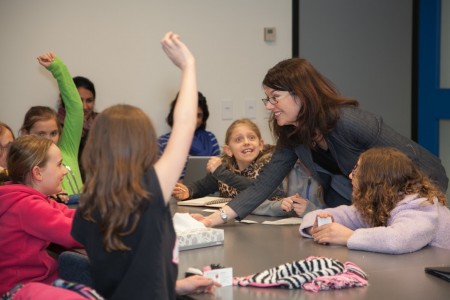 girls to basic concepts of immunology, good and bad germs and the members of the Bowdish Lab. Dr. Bowdish proposed a challenge to the girls; to encourage scientific inquiry, whoever asks the greatest number of scientific questions by the end of the night will win a prize! Every time a student asked a question, they would receive an official Dr. Dawn Bowdish business card to keep track. Dr. Bowdish nearly ran out of business cards
girls to basic concepts of immunology, good and bad germs and the members of the Bowdish Lab. Dr. Bowdish proposed a challenge to the girls; to encourage scientific inquiry, whoever asks the greatest number of scientific questions by the end of the night will win a prize! Every time a student asked a question, they would receive an official Dr. Dawn Bowdish business card to keep track. Dr. Bowdish nearly ran out of business cards 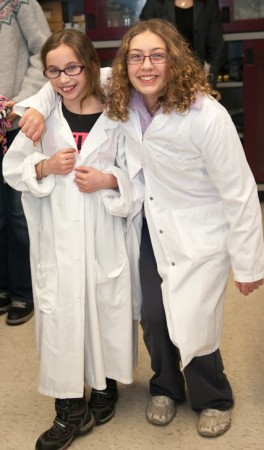 before the end of the presentation!
before the end of the presentation!
The girls were then split into groups of two to three to take part in a variety of hands-on scientific activities. Of course, if the girls wanted to participate in awesome science activities, they need the proper scientific attire.
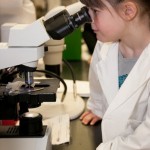
Members of the Bowdish lab organized five stations to help explain what we do as scientists. . Mike Dorrington introduced the girls to using a microscope to analyze anything from blood to nasal wash samples. Mike showed the girls how we separate blood into different components in order to isolate white blood cells. The girls were then able to observe the various types of white blood cells using pre-prepared slides. Bowdish lab organized five stations to help explain what we do as
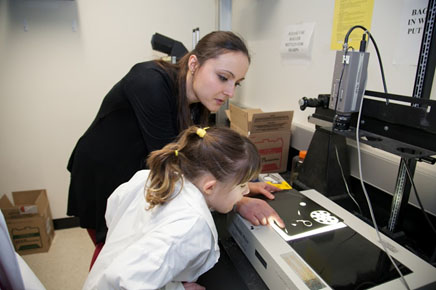
Alicja Puchta demonstrated how scientists develop special film to analyze anything from X-ray results to protein analysis. The girls were taken into a totally different world – the dark room. Special red lights allow for scientists to avoid exposing sensitive film to normal light. The girls were able to expose film to a variety of objects such as CD’s and pens and develop the film for their own take-home souvenir!
Avee Naidoo and Keith Lee introduced the concepts of acid and base chemistry using a red-cabbage based pH indicator. The girls were allowed to use common household products to visualize changes in pH. Acids like vinegar turned the purple solution a bright neon pink, whereas bases such as baking soda turned the solution to blue and green. The grand finale was to add a piece of dry ice into a (green) basic solution. What would happen? The dry ice was able to turn the solution a variety of colors from green to blue to purple to pink in an eye catching manner.
red-cabbage based pH indicator. The girls were allowed to use common household products to visualize changes in pH. Acids like vinegar turned the purple solution a bright neon pink, whereas bases such as baking soda turned the solution to blue and green. The grand finale was to add a piece of dry ice into a (green) basic solution. What would happen? The dry ice was able to turn the solution a variety of colors from green to blue to purple to pink in an eye catching manner.
Kyle Novakowski explained the concepts of dry ice and how we as scientists rely on it to send samples around the world while keeping them very cold. Students were shown what happens when dry ice is added to warm water and the process of sublimation. The resulting CO2 gas was then bubbled through a soapy solution to make spooky “boo bubbles” which the girls were able to hold in their very own hands. The girls were very excited to pop the bubbles and witness the escaping gas.

Although the girls did not wish to be whisked away from the exciting applic

ation s of dry ice, Dr. Preethi Jayanth was able to maintain the same level of fun at her stations. Our future scientist guests were able to observe various types of agar used to grow
After a few hours of exciting science, our champion question-asker was awarded a prize during a wrap-up Q&A session with Dr. Bowdish and the lab members. The immense amount of positive feedback and enthusiasm made for a wonderful night that we hope to experience again soon.bacteria. While peach and chocolate agar may sound appetizing – nobody would want to eat this stuff! The girls were given the opportunity to detect microbes on their own hands before and after washing! Two to three days later, the girls were sent pictures of all the bacteria on their hands which had grown on the agar.
